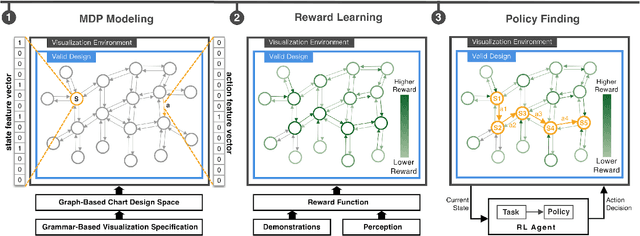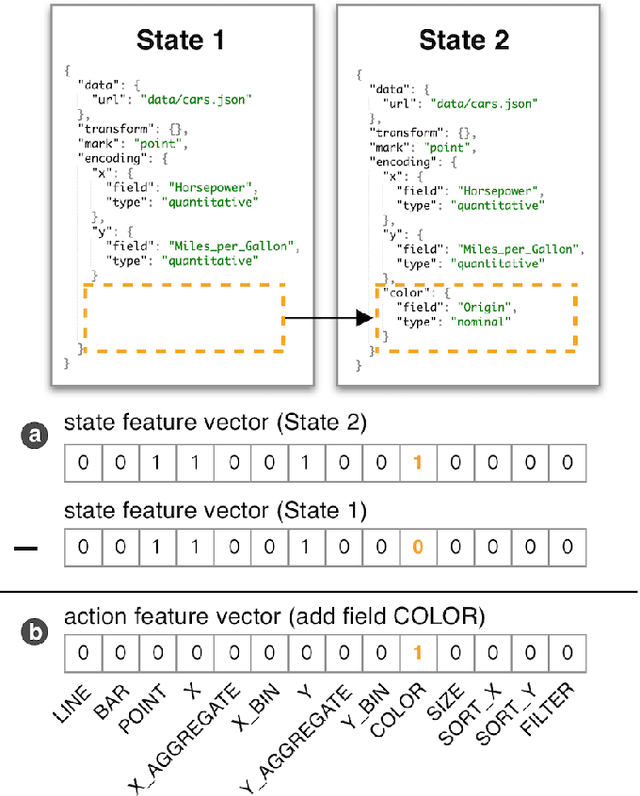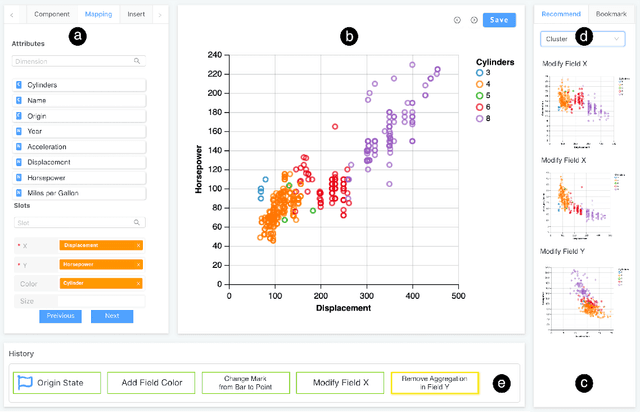Task-Oriented Optimal Sequencing of Visualization Charts
Paper and Code
Aug 07, 2019



A chart sequence is used to describe a series of visualization charts generated in the exploratory analysis by data analysts. It provides information details in each chart as well as a logical relationship among charts. While existing research targets on generating chart sequences that match human's perceptions, little attention has been paid to formulate task-oriented connections between charts in a chart design space. We present a novel chart sequencing method based on reinforcement learning to capture the connections between charts in the context of three major analysis tasks, including correlation analysis, anomaly detection, and cluster analysis. The proposed method formulates a chart sequencing procedure as an optimization problem, which seeks an optimal policy to sequencing charts for the specific analysis task. In our method, a novel reward function is introduced, which takes both the analysis task and the factor of human cognition into consideration. We conducted one case study and two user studies to evaluate the effectiveness of our method under the application scenarios of visualization demonstration, sequencing charts for reasoning analysis results, and making a chart design choice. The study results showed the power of our method.
 Add to Chrome
Add to Chrome Add to Firefox
Add to Firefox Add to Edge
Add to Edge